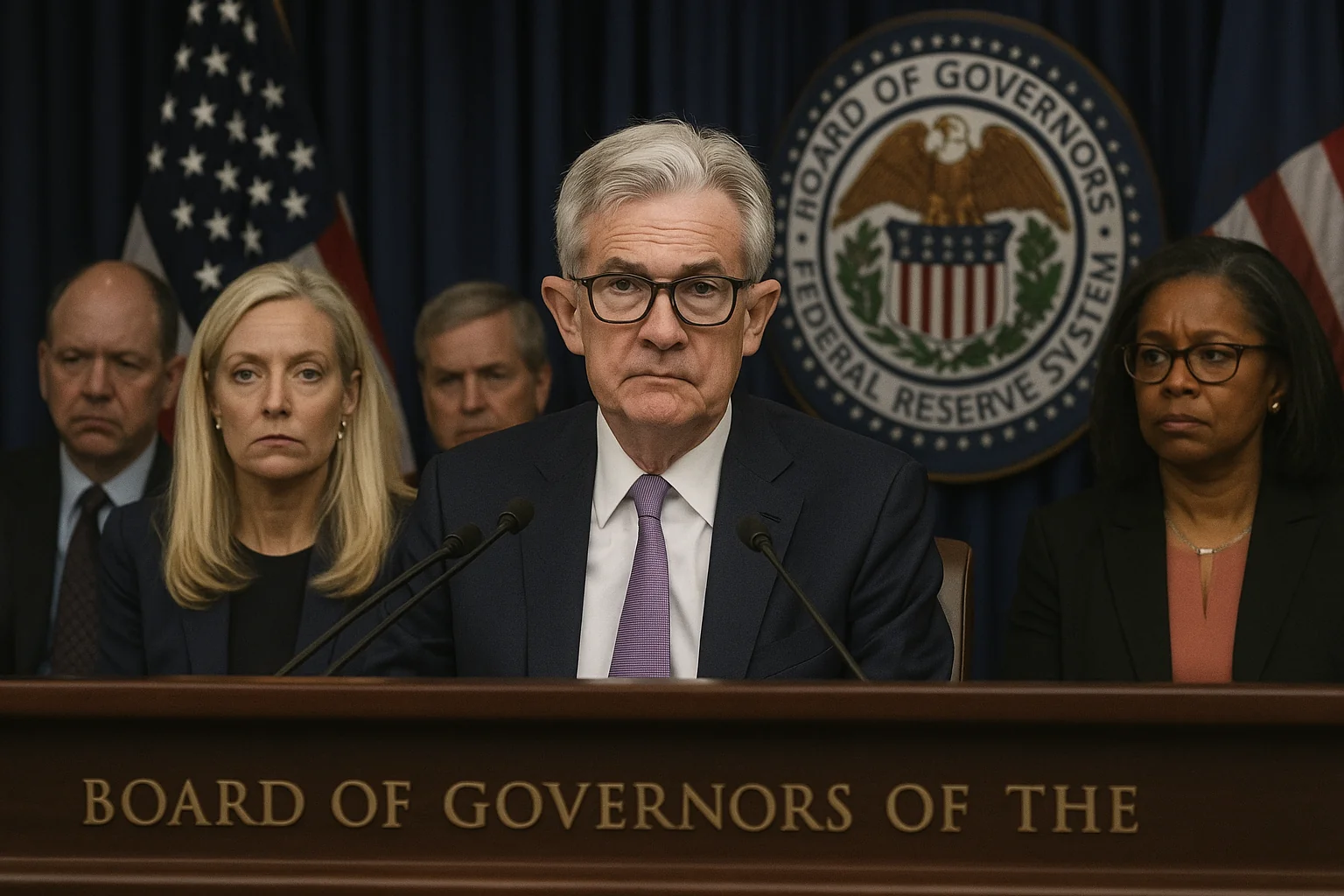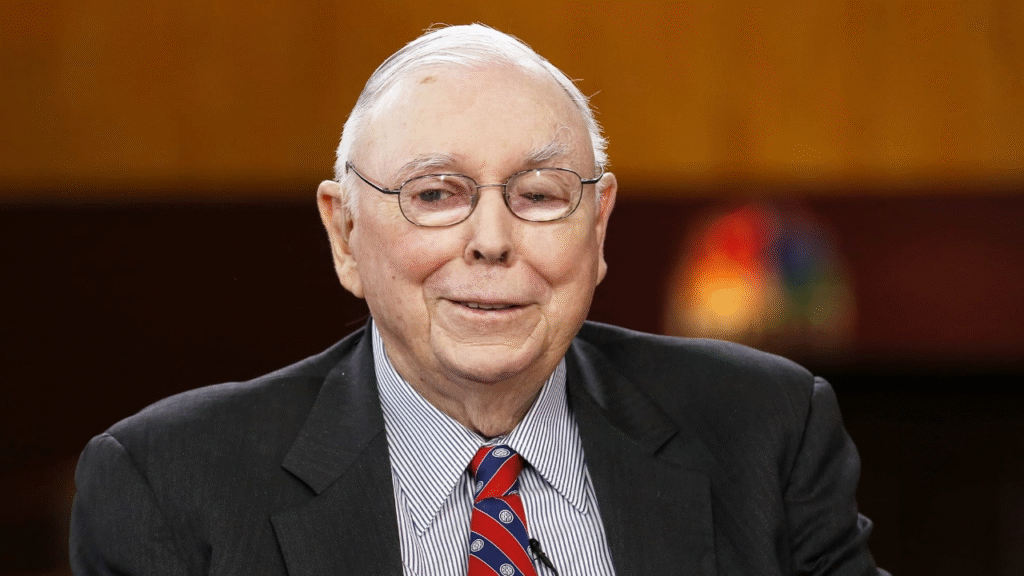The Federal Reserve’s long-anticipated rate cut is no longer just a question of timing — it’s a test of trust. For months, investors have priced in a quarter-point reduction to the 3.75-4.00% range, convinced that America’s slowdown requires relief. Yet as the U.S. slips into what economists call a “data vacuum,” that confidence has turned into unease. How do you steer a $28 trillion economy when you can’t see the dashboard?
Context: the silent markets and missing indicators
Normally, Wall Street breathes in rhythm with Washington’s releases — job numbers, inflation data, retail sales, Treasury yields. But in recent weeks, the usual stream of economic reports has dried up. A government data blackout, partly due to cybersecurity audits and delayed publications, has left analysts guessing.
The mainstream narrative remains cautiously optimistic. The Fed, we are told, is “data-dependent.” Its policy committee, chaired by Jerome Powell, prefers to move carefully, waiting for numbers to justify easing. With inflation cooling and the job market softening, the argument goes, a small rate cut is both safe and symbolic — proof that the Fed still controls the levers of stability.
Yet even by official accounts, the system looks shaky. Treasury yields remain volatile, mortgage rates flirt with 8%, and household debt surpasses $18 trillion. Without timely data, these signals blur. The Federal Reserve may be operating more on instinct than information — a dangerous gamble for the world’s largest economy.
Oppositional Argument: the myth of “measured” Fed control
Let’s confront the myth: the Fed isn’t in control; it’s improvising. The so-called “measured approach” masks an institution boxed in by politics and fragile confidence. Powell’s team faces election-year pressure from both sides — Democrats warning of recession, Republicans decrying monetary manipulation.
Markets aren’t fooled. The S&P 500 oscillates violently on rumor alone. Bond investors cling to contradictory cues, from dovish whispers to hawkish leaks. Meanwhile, without official labor and inflation updates, the Fed’s data-driven identity collapses into narrative management.
This is the paradox of the current Fed rate cut: it’s meant to calm markets, yet it exposes their dependency on the illusion of control. Cutting rates into a data blackout doesn’t signal prudence; it screams uncertainty.
Analytical Breakdown: cause, consequence, and credibility crisis
At the root of this crisis lies America’s digital fragility. The Bureau of Labor Statistics, Census Bureau, and Treasury data systems have faced repeated cyber-intrusions over the past year. Washington refuses to disclose the extent of the breach, but insiders hint at compromised pipelines of inflation and wage data.
In effect, the Fed is navigating without instruments. Its dual mandate — price stability and full employment — relies on the same datasets now under audit. By October 2025, even the core inflation index was released two weeks late.
The economic cost of blindness is profound. Without fresh data, forecasting becomes faith-based economics. Quant funds can’t model trends; small businesses can’t price loans; global investors lose the ability to benchmark U.S. performance. The so-called “data-vacuum shock” is not merely technical — it’s systemic.
History offers a warning. In 2007, the Fed’s delay in recognizing credit deterioration amplified the subprime collapse. Today’s opacity risks a replay: misjudged liquidity, mistimed easing, misplaced optimism.
Beyond finance, credibility itself is eroding. When Powell tells Congress the Fed acts “transparently,” markets chuckle. Transparency without data is theater.
Human Perspective: the invisible recession for ordinary Americans
Step outside Wall Street and the blackout feels painfully visible. Grocery prices, despite easing CPI figures, remain 25% above pre-pandemic levels. Mortgage applicants face chaotic rate quotes that change hourly. Small business owners describe “economic static” — a fog of uncertainty where no one knows whether to expand or cut staff.
A midwestern auto-parts manager put it bluntly: “We’re making decisions blindfolded. One week we’re told rates will drop, next week it’s delayed. It’s like planning payroll by rumor.”
For ordinary households, the promise of a Fed rate cut offers psychological relief but little practical help. A quarter-point dip in interest rates won’t undo years of inflation or reset rent prices. And with lenders tightening credit, the cut may remain symbolic — an optical gesture to prove the Fed is “doing something.”
Counterarguments
Critics might argue that the Fed has no choice. Monetary policy, they insist, must anticipate — not wait for — data. Better to ease early than risk deeper contraction. Others say a temporary blackout is irrelevant: the Fed’s private channels, from bank surveys to payment flows, provide sufficient guidance.
Yet these defenses underestimate how confidence works. Monetary credibility isn’t built in private spreadsheets; it depends on public data and collective belief. The Fed’s secrecy fuels conspiracy theories — about manipulated inflation numbers, political timing, and Wall Street favoritism. Once faith erodes, even accurate policy loses its impact.
Conclusion: America’s economy runs on trust, not code
The Fed rate cut will likely happen this week. But behind the calm press release lies a fragile truth: America’s financial architecture runs on information, and information runs on trust. Once that trust breaks — through data blackouts, censorship, or cyber-breaches — the numbers mean nothing.
Powell can cut rates, but he cannot cut uncertainty. Until the data flows again, the U.S. economy remains suspended between illusion and inertia — a machine humming in the dark.
For a nation that built its empire on statistics, the silence speaks louder than any Fed statement.
External Links
56 views






